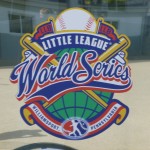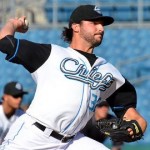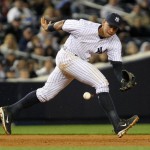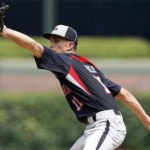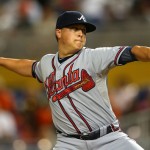(Slow news week; i’m posting some posts that have been sitting in draft mode for a while).
As mentioned in my previous baseball movie review, we’re a bit behind on watching movies. If it weren’t for DVRs, I don’t think we’d have any idea what was going on in the modern entertainment world. After writing the review of the movie 42, I suddenly remembered that we also recently saw Clint Eastwood‘s Trouble with the Curve. So lets dive in with a review.
Story and Acting: I did not like the story, all in all.
Yes, we get it. Moneyball (and Billy Beane) invented modern stats-based scouting. But did it have to be so ham-handedly rammed down our throats? The entire storyline revolves around the fact that Eastwood’s character is an old-school baseball scout, and he’s old. Meanwhile the scouting office is apparently run by an uber stat-guy (played by Matthew Lillard, currently starring in the new series The Bridge on AMC) who has the ear of the owner. But lets face it; if you’ve got a top 3 first round pick, we’re talking millions of dollars and a significant portion of your franchise’s near-immediate future at stake. You’re not just sending one scout; you’re sending your area scout, your cross checker, your scouting director and your General Manager.
Not to mention, you absolutely cannot depend on stats alone when scouting high school players. There’s so much variation in talent between teams, even in good baseball areas, that statistics are completely deceiving. Keith Law mentioned a time where he went to a HS game in Georgia to scout a guy and, during warmups, the opposing team had a 3rd baseman who literally could not throw the ball across the diamond. The prospect’s team was ahead 15-0 after three innings and the slaughter rule was put into effect. What value would those stats have for that prospect, good or bad? College guys are favorites of sabre-slanted scouting directors because there’s a known body of work. If a guy plays in (say) the SEC, you know what kind of competition he plays against on a week in/week out basis and can properly judge his stat line.
The story needlessly made the star slugger an arrogant, entitled jerk. He could just as well have been portrayed as a shy kid who wasn’t aware of his own skills or limitations. The villian wasn’t the draftee; it was the front office executive who undermined Eastwood. I guess the counter argument would be that if the draftee wasn’t a bad kid he’d have to be a good kid, and then you’d be rooting for him and against Eastwood’s interpretation of his limitations.
Did the Amy Adams character have to be undermined by a younger, whiter guy? Did they have to add in blatant sexism to this story? Couldn’t have Adam’s character just taken off from work with some implicit pushback from management in order to make the story work?
Another problem: do we really think that scouts “keep tabs” on “their guys” after they start playing? If you’re an area scout in the rural mid-atlantic, you don’t have time to take in random minor league games to track your players. You’re on the road every day scouting players and burning the road trying to get to the next game. I found that to be somewhat unbelievable.
I’m not even bothering to mention the Justin Timberlake character, whose inclusion added nothing except a cheap romance storyline for the ladies. I guess that’s a good enough reason.
Lastly, what did the “finding of the janitor” have to do with this story? That made no sense; you could have made the point that the high draft pick couldn’t hit a curveball just as easily by having him whiffing on curveballs being thrown by a BP pitcher. After watching the climactic scene you could have easily have asked, “well is he missing the curve because its so amazing, or because he can’t hit a curve?” I suppose the plot device was there to enable the Adams character an out of her lawyer job, serving as the janitor’s agent.
Baseball Sequences:
The climax of the movie is about a scouting sublety; watching a hitter’s hands moving when he’s faced with a breaking pitch. This leads to the title of the movie and to the prospect’s downfall at the end. That’s great and all, but difficult to show, especially in an actor playing a baseball player and not a player himself.
I’d be curious to see the draftee’s stat line in this movie; he seemed to go 15-15 with 15 homers in play sequences. I guess it wasn’t enough to just show this kid getting hits; he had to be the best slugger of all time in po-dunk North Carolina or wherever they were supposed to be playing.
Otherwise, there really wasn’t much actuall baseball to watch here; it was a “baseball movie” in topic only.
Conclusion:
A poor movie. I’m surprised Eastwood came out of acting retirement so that he could reprise his Gran Torino gruffy, grunting character and put him on a baseball field instead of a run down neighborhood in Detroit. I like Eastwood, I like his movies and wanted to like this one. But I just could not.
I know its probably been a few months (years?) since you’ve seen the movie, but what did you guys think?
